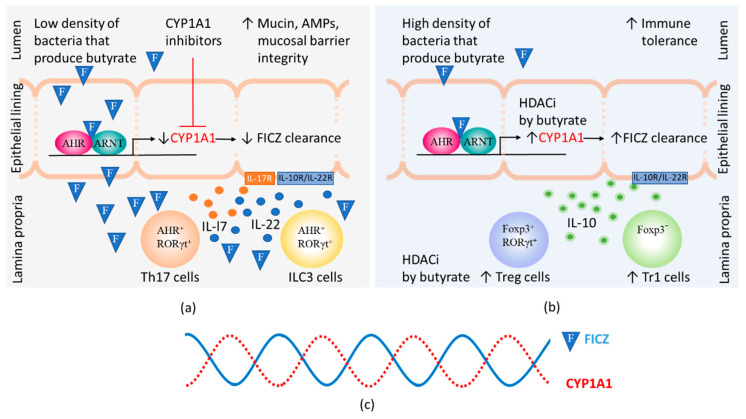Figure 3.
The steady-state levels of 6-formylindolo[3,2-b]carbazole (FICZ) influences gut immunity. The amount of FICZ (illustrated by an F in a blue triangle) that reaches the lamina propria depends on the CYP1A1 activity in the epithelial lining, which is modified by the presence of CYP1A1 inhibitors. Butyrate can by virtue of its histone deacetylase inhibitory function (HDACi) contribute to increased numbers of Foxp3 positive and negative regulatory T cells (Treg and Tr1 cells) as well as increased CYP1A1 expression in intestinal epithelial cells. (a) At low levels of butyrate, heightened immunity is promoted by CYP1A1 inhibitors that cause FICZ to reach lamina propria and stimulate IL-22 and IL-17 expression in Th17 and ILC3 cells. Binding of IL-17 and IL-22 to their receptors on epithelial cells stimulate increased production of mucins and antimicrobial peptides (AMPs); (b) At high levels of butyrate, high CYP1A1 activity promotes the clearance of FICZ. Immunity is suppressed and Treg and Tr1 cells produce IL-10 that helps maintain tolerance to commensal bacteria by binding to receptors on epithelial cells; (c) Daily 24 h cycles in the CYP1A1 activity and the levels of FICZ.

